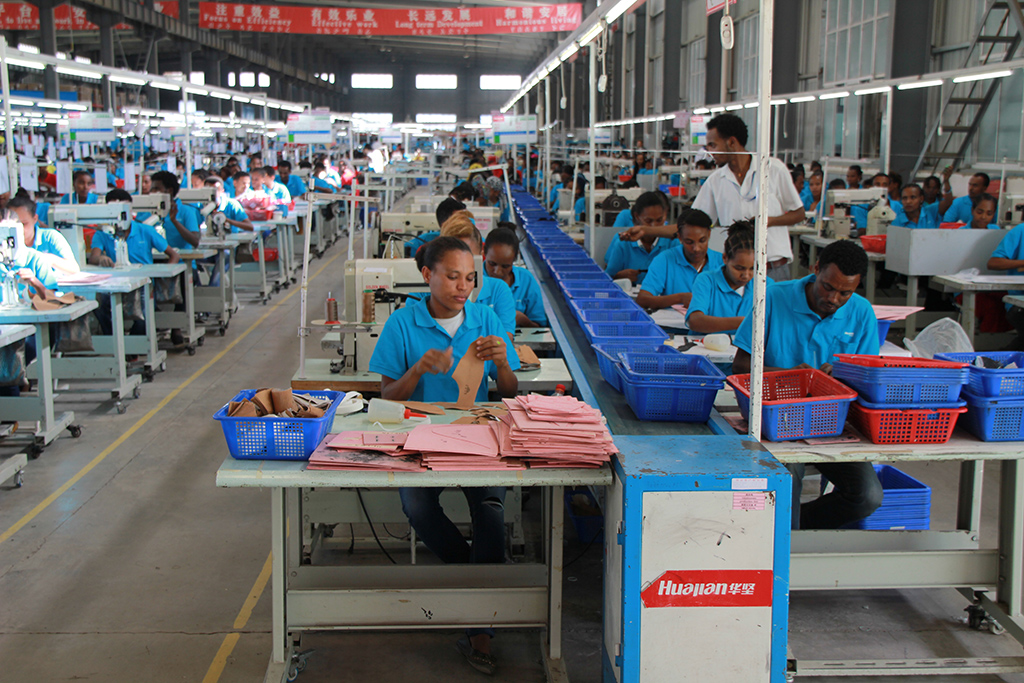Recommended
In July 2018, we set up a CGD Study Group on Technology, Comparative Advantage, and Development Prospects to discuss the impact on developing countries of automation, manufacturing, artificial intelligence, and the global governance of data. Over the course of three closed meetings and a conference held at CGD earlier this month, a renowned group of economists, development thinkers, technology experts, and business leaders held lively debates around what these technological trends might mean for development prospects. Study group members produced essays, blogs, and podcasts that, collectively, have been viewed or downloaded more than 65,000 times already. It isn’t over: We’re expecting to share a few more contributions in the coming weeks. But the last in-person meeting of the study group seems like a good moment to step back and summarize some of what we’ve heard and read, and where we think the conversation might be headed.
First, there was wide agreement in the group that automation is (broadly) good for development
Technology adoption has been a central feature of global economic growth worldwide, and there is no reason to see that changing. To quote Carl Frey: “The reason that India’s manufacturing employment share has remained flat around 12 percent for decades is evidently not automation. Rather, it is due to the failure of its manufacturing industry to modernize to become competitive…”
At the same time, the potential for rapid automation to cause dislocation and/or slow convergence is considerable
Past rapid technological change has been associated with dislocation both national and global. The Industrial Revolution was associated in its early years with stagnant wages and declining quality of life for workers and, over time, with deindustrialization in India and China. Historically, these economic disruptions have often been associated with social upheavals.
The actual rate and extent of dislocation from current advances is still largely an unknown
There is the potential for advances in AI and robotics to cause significant disruption in labor markets and, potentially, to remake comparative advantage across countries. Michael Osborne and Carl Frey looked at hundreds of detailed occupations in the United States and found that nearly half involve significant components that were automatable.
Shahid Yusuf argued that labor markets may not be able to adjust to rapid changes and notes that many governments, unable to discern a more effective path forward, remain focused on manufacturing-led development. This is despite the risk that robots will re-shore manufacturing output to rich countries and Dani Rodrik’s work on premature deindustrialization, which suggests the phenomenon of a declining manufacturing share spreading from advanced economies to low- and middle-income countries under the influence of automation.
On the other hand, there is evidence that automation is not (yet) destroying jobs at a particularly rapid rate (a subject addressed by Jason Furman in his keynote at our closing conference). And Benno Ndulu suggests that the traditional manufacturing-led growth model has only ever worked for a few countries at once. And reports of the death of the manufacturing may have been exaggerated, with the model evolving rather than dying. Bright Simons suggests that “Africa has already embarked on a very different path to increasing manufacturing jobs by embracing modular manufacturing and efficient small-batch production through support from Chinese supply chain strategic collaborators.”
The potential for new routes to growth is under debate
The services sector increasingly dominates global output, including output in developing countries. But development thinkers including Dani Rodrik are concerned by the sustainability of services-led growth. While some parts of the service sector share high-productivity features, these are comparatively low-employment, high-skilled activities. It is not clear that productive services will create good jobs for low-skilled workers in the same way that manufacturing has in the past. Yusuf reports the shift into high-technology employment has been slowing and recent growth in countries like India and Nigeria has been “jobless” (in the formal sector).
That said, Frey reports on the potential for each high-paying tech jobs to generate a lot more employment in an economy and Amolo Ng’weno and David Porteous note the considerable opportunity the digital economy provides to the informal sector in developing countries: “The Kenyan cellphone company Safaricom employs 5,400 people in its formal business in Kenya, but it has catalyzed the creation of over 130,000 mobile money outlets (which each employ one or two people) to handle the transition from cash to mobile money,” for example. Mayra Buvinic has demonstrated the role of mobile finance in improving outcomes in particular for women entrepreneurs. Again, Julie Zollmann and Amolo Ng’weno report that there are about 5,000 drivers on the Uber platform in Nairobi. Ng’weno and Porteous see the digital economy as providing a ladder toward formality over time. In the government sector, Alan Gelb and Anna Diofasi Metz report on the considerable power of digital ID combined with mobile financial systems to deliver services.
Technology is part of a broader set of factors that will affect Africa’s prospects
Traditional development concerns (including infrastructure, institutions, and education) are still extremely important, usually outweighing the potential development impact of new technologies. Traditional development concerns will also affect how much impact technology has. Alan Gelb and Vijaya Ramachandran have written a series of papers on Africa’s potential as a manufacturing destination, suggesting that the region suffers from comparatively high labor costs and a poor business climate—thus implying the model of goods-based export-led growth will face significant barriers in the region, even prior to any impact of automation.
And Bright Simons argues that developing countries, especially those in Africa, are doing badly in putting together “creative ecosystems” of app developers, in part because the broader economic environment is not in place to exploit models based on the institutional and infrastructural conditions of an OECD country. Especially players that aim to focus on the local market “consistently feel compelled to build out ‘across the value chain’ and take responsibility for multiple steps along that chain.” Konga, a Nigeria e-commerce startup, had to “build its own payment platform, courier network, anti-fraud program, fulfilment centers, call centers, and training system...” This suggests it is important to factor in the implications of technological change but probably not useful to view African industrial prospects solely or primarily through this lens.
And global regulatory issues loom large
However the broad economics of automation and AI play out at the global level, Susan Liautaud has emphasized the ethical considerations that are involved in rapid job churn, algorithmic control, and social media. Whether these concerns loom as large in the minds of developing country tech users is a matter of debate, but they raise global regulatory issues that will shape use in rich and poor countries alike. Diane Coyle notes that businesses face a patchwork of international legal and regulatory frameworks, with some jurisdictions seeking to assert their regulations extra-territorially. And concerns about algorithms enhancing norms and biases around gender or race are significant.
What does all of this suggest for CGD? The Center will continue working on the implications of new technology for comparative advantage—especially in Africa and with regards to manufacturing, as well as work on the digital delivery of government services. And it will ramp up its work on around the governance of digital technologies and their applications—on issues ranging from tax to privacy. As always, CGD will be thinking about implications for global institutions that flow from taking a more global perspective.
Interested in more from CGD on these important questions? Sign up for our technology and development newsletter.
Disclaimer
CGD blog posts reflect the views of the authors, drawing on prior research and experience in their areas of expertise. CGD is a nonpartisan, independent organization and does not take institutional positions.
More Reading





